
continued from previous page
![]()
| Everglades National Park, FL. Day trip to Anhinga Trail at
Royal Palm, Pinelands trail, Pa-hay-okee Overlook, Sisal Lake, Mahogany
Hammock, West Lake, Eco Pond. Hurricane Andrew struck southern Florida on
August 24, 1992, doing much damage to trees. We got to see a park ranger
vacuuming the main panorama at the visitors' center. He said they do that
once a year.
When we were leaving Thompson Park, we were shown a screech owl that was roosting in a hole in a dead tree right next to our campsite. Val got several pictures of the bird. She thought she heard a screech owl a couple of times the previous nights. |
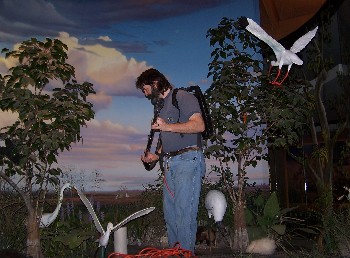 Visitors' center |
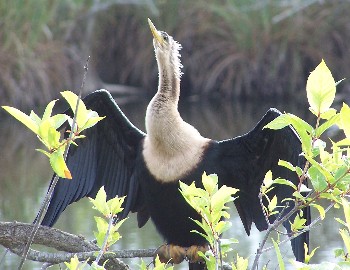 Anhinga on Anhinga Trail |
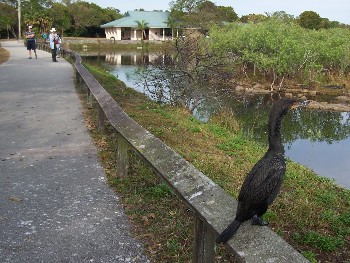 Cormorant |
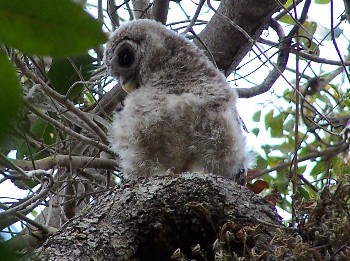 Young barred owl on Mahogany Hammock Trail |
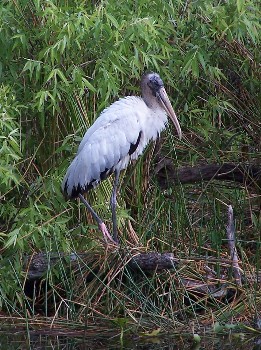 Woodstork |
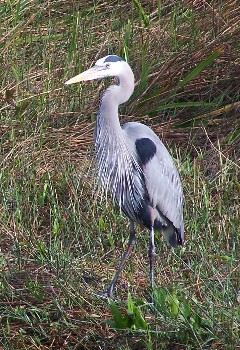 Great Blue Heron |
![]()
| Butterfly World, Coconut Creek, FL. $38.06 entrance fee, @
$17.95 each. Friday, Feb. 25. Rain. Laboratory has raised over one million
butterflies. Paradise Adventure Aviary with live butterflies from five
continents. Hanging Garden and Butterfly Emerging Area has flower filled
hanging baskets on one side and butterfly pupa emerging cases on the other
side. Tropical Rain Forest has thousands of exotic butterflies and
families of free flying birds along pathways leading to the cave and
waterfall with periodic showers in this area. Grace Gardens is along the
banks of the lake featuring wild butterflies. Wings of the World in the
Secret Garden has Streamertail Hummingbirds from Jamaica and Sun Birds of
Africa flying all around you as try to take pictures of them. The
vine-covered maze of the Secret Garden houses one of the largest
collections of flowering Passionvines and Dutchmen's Pipevines in the
world.
The English Rose Garden has approximately 20 different varieties blooming; all with perfect blossoms touched with drops of rain. The Tinalandia Suspension Bridge is a rocking, rolling replica of one found in the real rain forest in Ecuador. The Jewels of the Sky Aviary has hummingbirds, Gouldians, Honeycreepers, and Euphonias also call this home in a flower-filled habitat. The Museum and Insectarium is a spectacular collection of insects, butterflies, and moths from around the world. |
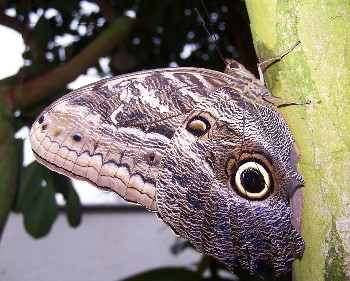 |
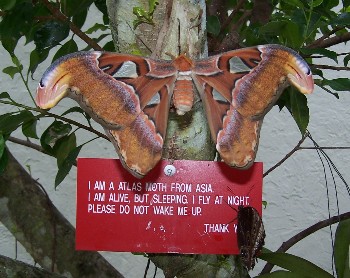 |
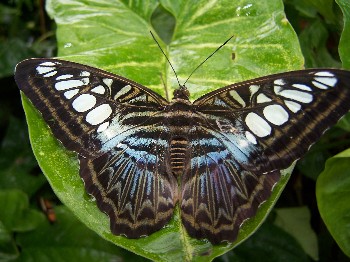 |
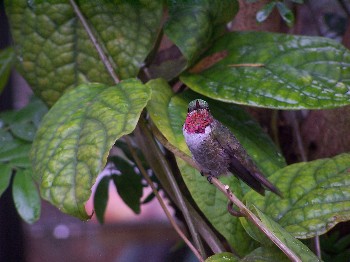 |
![]()
| Highland Hammock State Park Arrived on Friday, Feb. 25, and camped in the wilderness area since I tried to make reservations too late. One night was $9.81. Very primitive - no electric, no showers, no water. As soon as we got to our site, it started to rain, and we were able to view an interesting lightning show. We drove through the regular camping area the next morning and found it very congested since it was a weekend. The wildlife drive was not opened because it was too early for the park rangers to unlock it. |
![]()
| Lake Louisa State Park, Clermont, FL, is said to be "Clermont's Best Kept Secret." The park is about 4,500 acres which includes 6 lakes, 2 streams, 10 natural communities, and 105 acres of lake shoreline. I visited this park several years ago when it only had a gravel road and parking lot for access. Considerable development has been made since then and the park now offers many recreational facilities and about 30 miles of hiking, biking, and equestrian trails. A triathalon was in progress while we were there, although it was cold and windy. |
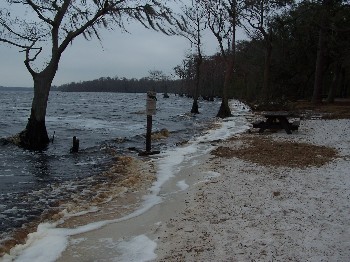 The cold, windy, rootbeer-colored lake |
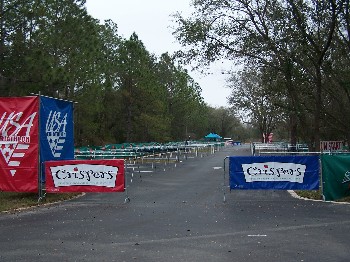 Triathalon set-up |
![]()
| Lake Griffin State Park, Fruitland Park, FL, is part of Florida's "Chain of Lakes." The lake is drained by the Oklawaha River, flowing north and adding water from Silver Springs, and continues on to the St. Johns River. The 460-acre park is nestled in a live oak hammock on sandhill terrain typical of Florida's Central Ridge. |
![]()
| Silver River State Park was visited again on Sunday, Feb. 27, since it was raining, and we were able to visit the museum which is only open on weekends and holidays. We did the trails using umbrellas and noted the resurrections ferns were now lush and green rather than the curled up brown leaves we noted a couple of weeks prior. |
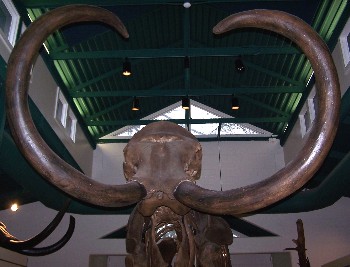 Museum |
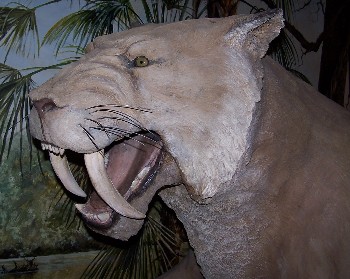 Saber tooth tiger |
![]()
| Paynes Prairie Preserve State Park is located on the way to
Gainesville. Bald eagles were nesting in the vicinity of the visitors'
center, which has some neat indoor exhibits. There is an observation tower
to view the prairie which is quite wet at the present time. There are
feral horses and bison on the prairie but we did not see any. We did see
three deer calmly browsing in the forest. A couple of bikers said they had
seen 15 deer already this morning.
There is also a boardwalk by Lake Wauberg where we saw an osprey, several vultures, an adult bald eagle, an immature bald eagle, a wood stork, and cormorants in a few minutes of bird watching. |
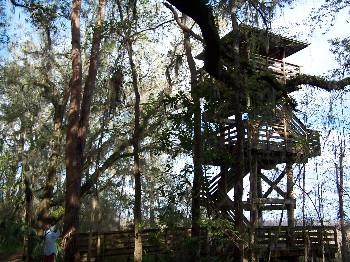 Observation tower |
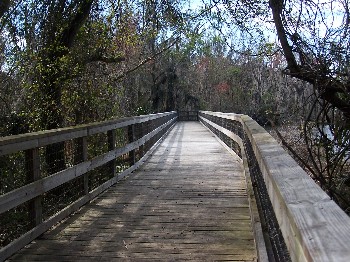 Boardwalk |
![]()
| Butterfly Rainforest at the McGuire Center for Lepidoptera and
Biodiversity at the University of Florida in Gainesville. It is predicted
that this exhibit will soon become the largest Lepidoptera center in the
world. Right now it is second only to the one housed in the British Museum
in London. The Wall of Wings showcases over 13,000 specimens and photos of
butterflies and moths. The public can view the Rearing Lab and the
Collection and Research labs. The research center currently has 4.5
million species with the capacity to increase to 20 million.
The Rainforest, on any given day, can contain up to 150 species of butterflies, with hundreds flying freely among the visitors. The Rainforest was built on three gradual levels to provide a spot for each type of butterfly to roost. The plantings are very lush, but no host plants for females to lay eggs are allowed. Breeding is in the safety of the labs so none of the visitors can leave with an exotic hitchhiker egg attached to a shoe. We also visited the Microbe exhibit, a new exhibit on Florida prehistoric animals, and the cave. Entrance fee to the Rainforest was $7.50 per person, $6.50 for seniors; $14 total. |
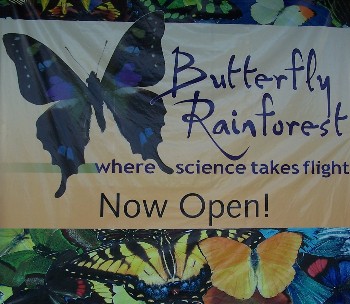 rainforest |
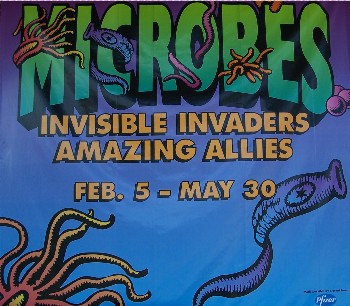 microbes |
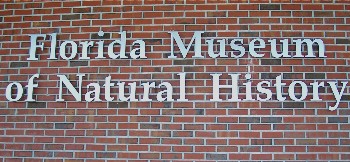 Museum |
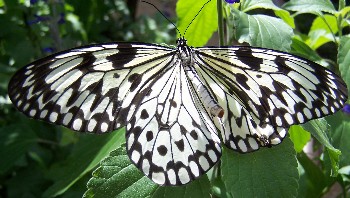 butterfly |
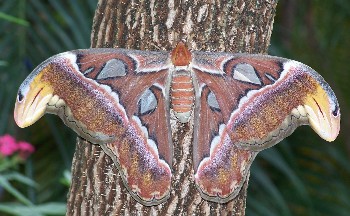 |
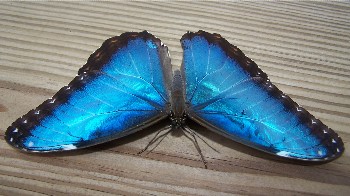 |
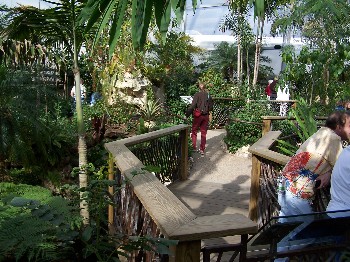 |
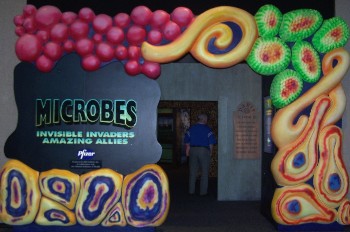 |
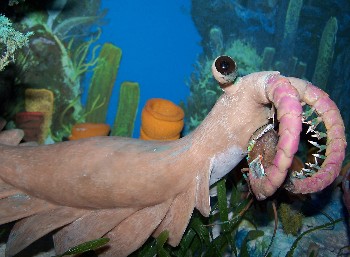 |
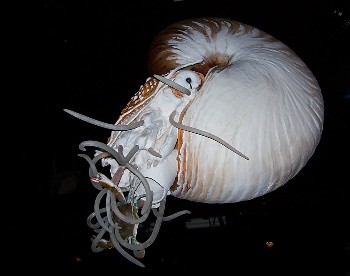 |
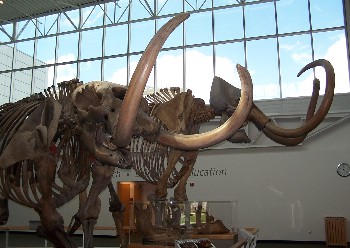 mastodon |
![]()
| Blue Spring State Park, DeLand, FL, one of the best manatee
viewing sites in Florida. The ranger at the entrance gate said there were
2 or 3 animals in the spring run. When we approached the run, a man coming
back on the boardwalk said there were 20 or 30 animals in the run. As we
headed down the short spring run to the St. Johns River, we saw a total of
5 manatees. But, as we got to the mouth of the run, the manatees were so
thick, they looked like a log jam on the far bank, basking in the shallow
water over the white sand and in the morning sunlight. There were at least
40 manatees there and more were heading in from the river.
There were also a couple of large alligators and several turtles sunning on the shore and tree limbs. After watching the masses of manatees for over an hour, we took the boardwalk up to the spring. There were about a dozen in the swimming area which closed the section to human swimmers who are not allowed to enter the water when manatees are present. There were scuba divers at the spring source trying to dive into the cave against the current without success. The commotion caused the manatees to remain below that area and we watched groups, singles, and mothers with calves, as they swam within 25 to 75 feet of us. We could have easily spent the whole day there, but we wanted to visit several other state parks. |
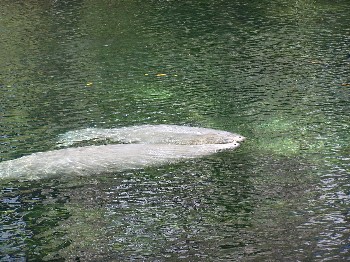 |
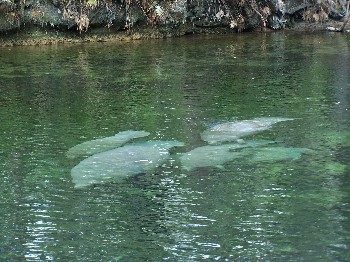 |
![]()
| Hontoon Island State Park is reached by a short ride on a ferry boat to the park for visitors and bicylcles. We hiked about 3 miles of trails on the quiet island. There is also an informative exhibit on the island. |
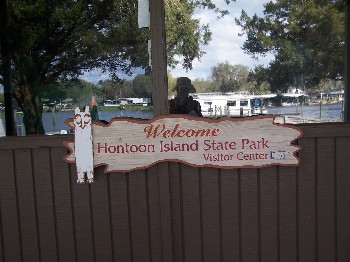 Hontoon Island |
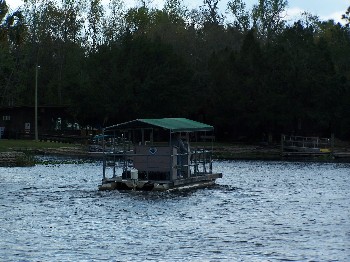 ferry boat |
![]()